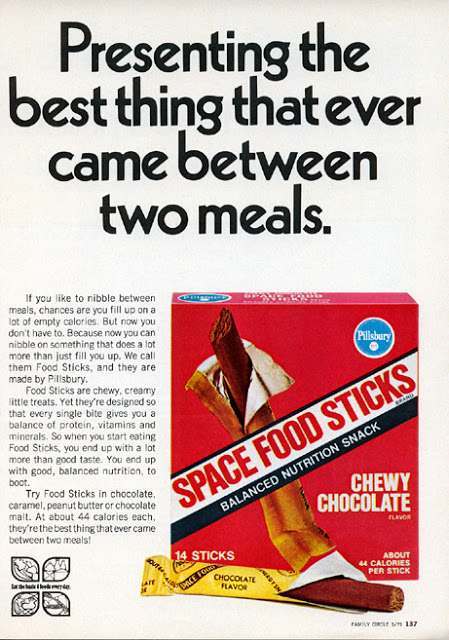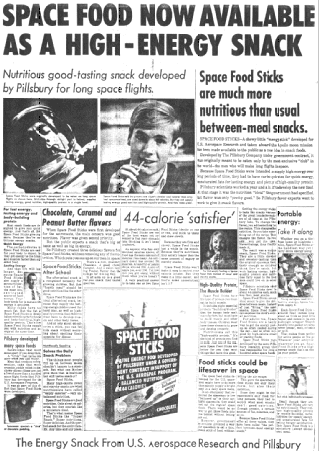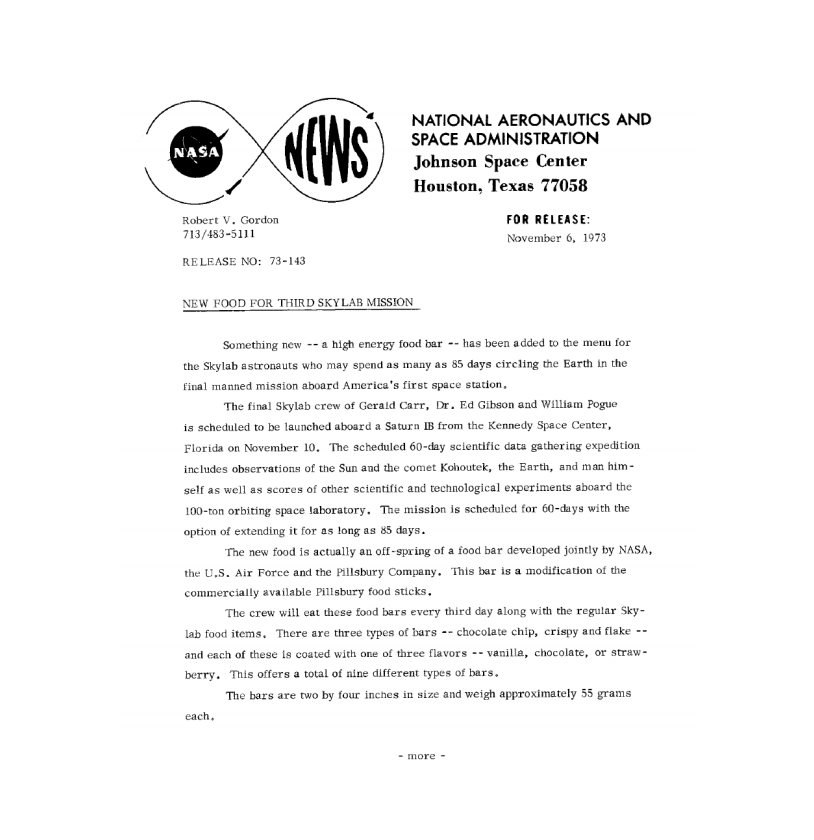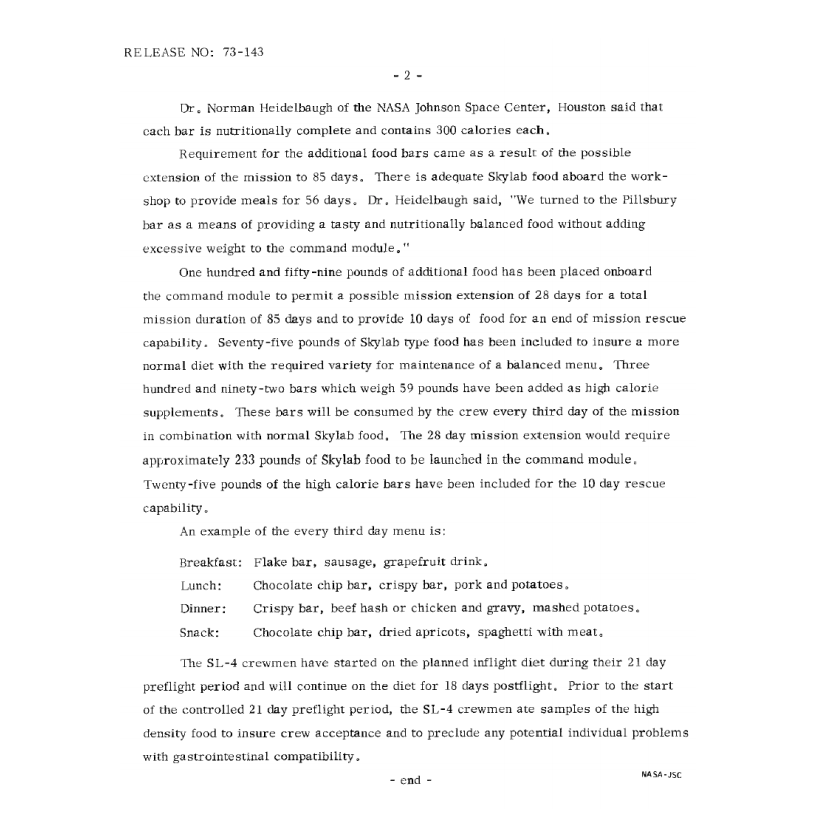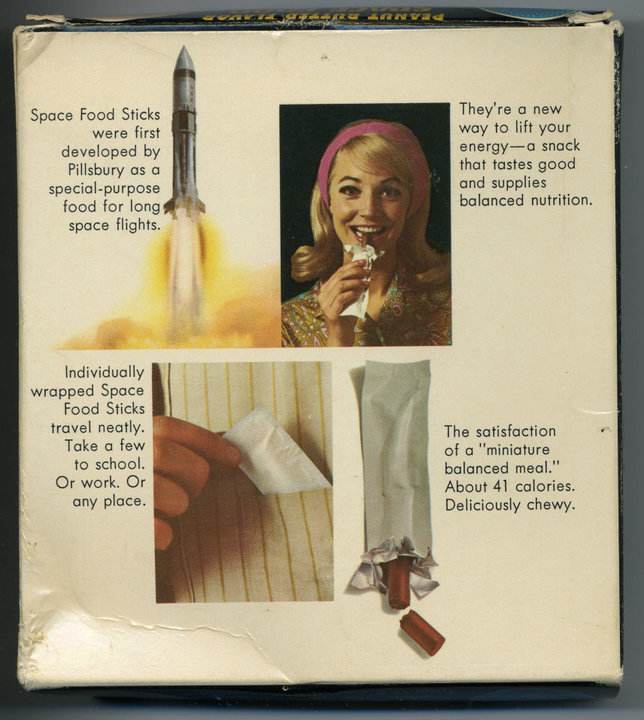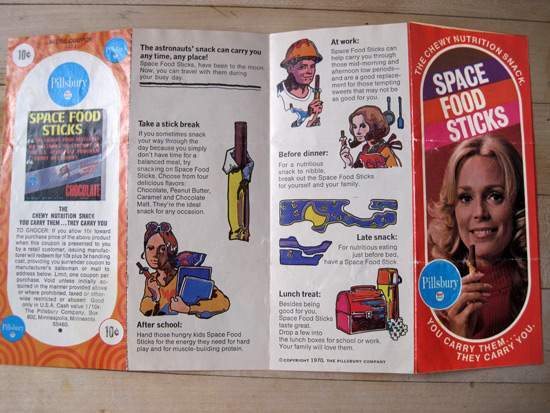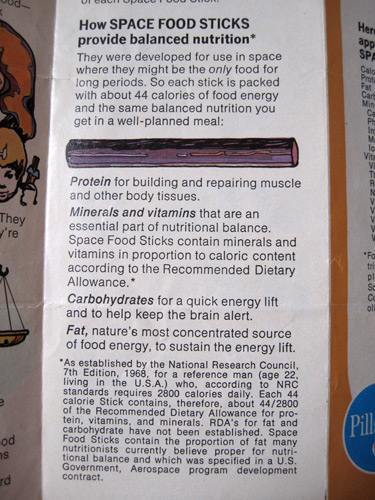Space Food Sticks are “a living monument to golden years of the Space Age”. So says the site dedicated to Space Food Sticks. And who are we to question the experts. If a stick of chemicals made decades ago is now alive, then good for it and good for science. If one of those things got loose in space, what price a colony of Space Food Sticks contacting alien life before humanity gets there? “Take me to The Pillsbury Company,” the aliens will demand on landing. Take me to see Dr. Howard Bauman, the foodologist who created the energy stick that “could slide into an airtight port located in an astronaut’s helmet to provide essential nutrition in case of an emergency” – such as plugging a pipe leak or sealing a crack in the spaceship’s superstructure. No need to chew when you can just unwrap the stuff and slap it over the space draught.
And you too could taste the dream of “non-frozen balanced energy snack in rod form containing nutritionally balanced amounts of carbohydrate, fat and protein” available in caramel, chocolate, malt, mint, orange and peanut butter, all enshrined in space-age foil.
Pillsbury bought space-age foods to the masses. Kids could eat like a man who had no other choice:
In 1973, a version of SFS made its way on the Skylab 3 mission. This is the NASA press release:
Very soon even women could eat the things:
“You Carry Them… They Carry You”
By the mid 1970s, Space Sticks were just food sticks. Space foods just didn’t cut the cool:
Delicious! And why not wash it down with a glass of TANG, the drink for space dudes – with the added benefit of making your urine glow in the eternal darkness:
Although many people (wrongly) believe NASA invented Tang, the powdered orange drink mix does have a history that goes hand-in-hand with U.S. spaceflight. Tang was originally made by General Foods in 1957, but its popularity reached new heights when it was chosen to fly with John Glenn on Friendship 7 and on later Gemini Program missions.
Would you like to support Flashbak?
Please consider making a donation to our site. We don't want to rely on ads to bring you the best of visual culture. You can also support us by signing up to our Mailing List. And you can also follow us on Facebook, Instagram and Twitter. For great art and culture delivered to your door, visit our shop.
